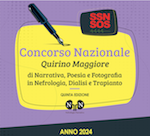Buttonhole Technique or Rope Ladder Technique?
DOI:
https://doi.org/10.33393/gcnd.2016.733Keywords:
AVF cannulation, Buttonhole cannulation, Dialysis patient, InfectionAbstract
Buttonhole cannulation technique (BH) was introduced by Doctor Twardowsky, a Polish nephrologist, in the seventies and was proposed in Italy and in a great part of Europe in more recent years. It consists in the placement of needles exactly in the same spot, at each treatment. An increased interest in the technique is justified by a greater attention to patients' needs and to their AVF preservation. BH technique was introduced in the dialysis center of Rovereto in 2008. After 6 years, a two-months multicenter observational study was performed in order to compare BH cannulation and rope ladder data, concerning pain hemostasis and hematomas. With a single center retrospective analysis, infection and aneurisms were evaluated as well. BH group showed less pain, less infections, less hematomas and less aneurisms compared to the rope ladder group. BH has got some challenges regarding the need for nurses education and training, single cannulator allocation while implementing BH sites and strict adherence to specific clinical practice protocol in order to prevent infections. The benefits for the patients are evident and none of our patients wanted to return to previous cannulation practice. (nursing)
Downloads
Downloads
Published
How to Cite
Issue
Section
License
Authors contributing to Giornale di Clinica Nefrologica e Dialisi (GCND) agree to publish their articles under the CC-BY-NC 4.0 license, which allows third parties to re-use the work without permission as long as the work is properly referenced and the use is non-commercial.











